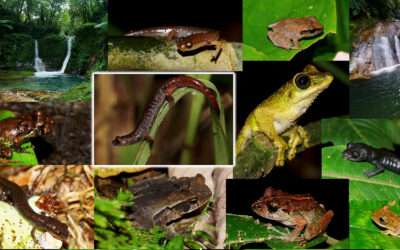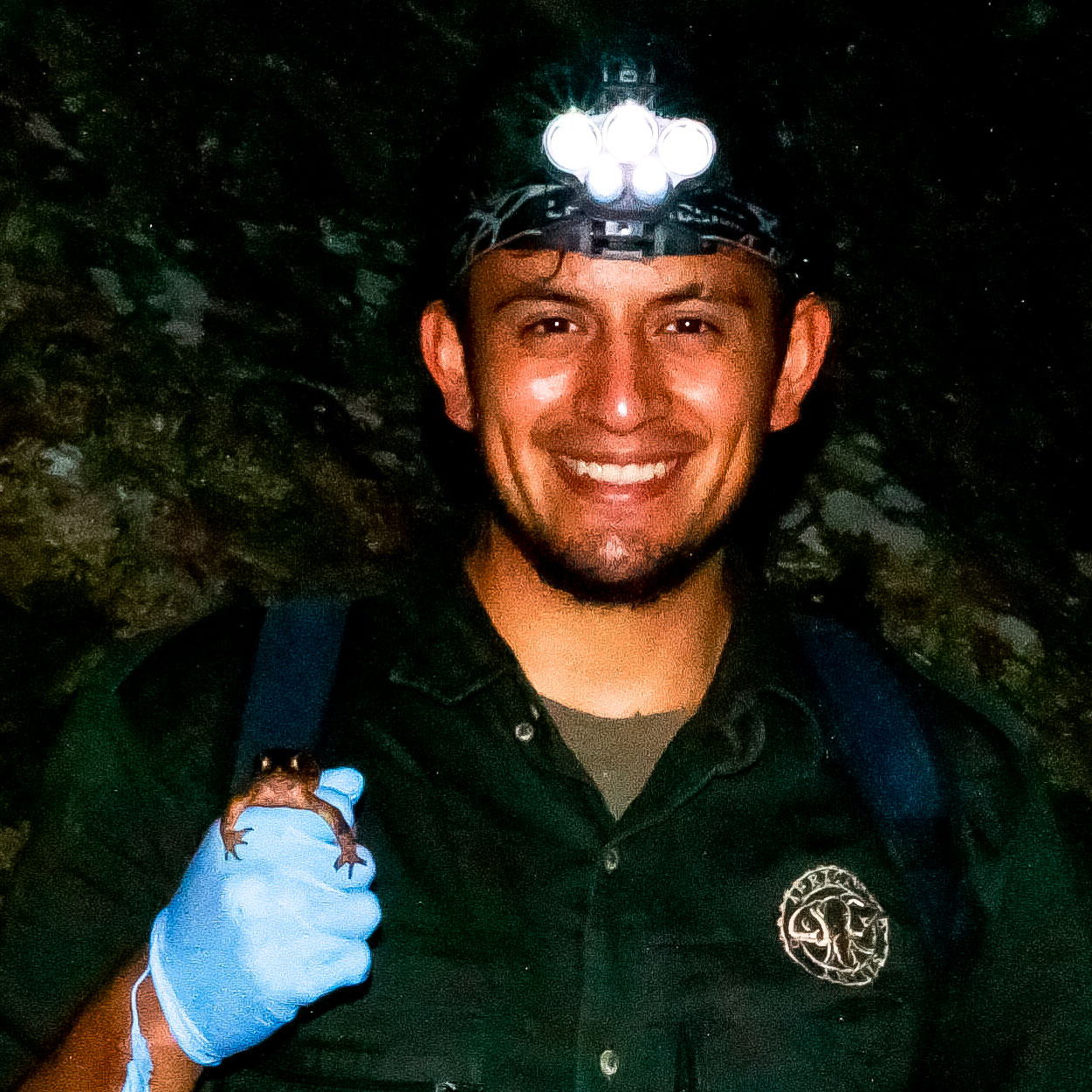Conservación de Anfibios A.C.
Is a non profit organization created in 2022 by a group of Mexican conservationists with the aim of protect native and endangered amphibians from Mexico.
Our flag Project is the Cloudforest Amphibian Sanctuary in Cuetzalan, Puebla.
This is a 8 hectares patch of cloud forest, the most threatened terrestrial ecosystem in Mexico.
The Sanctuary protects 17 native amphibians from Cuetzalan’s cloud forest, some of those species are endemic from this region, such as Cuetzalan Salamander (Aquiloeurycea quetzalanensis) which is also critically endangered.
We invite you to navigate through the different seccions of our website where you can learn more about our projects and the wonderful amphibians.
Mision
Develop conservation programs for amphibian species native to Mexico, prioritizing those endemic or endangered species, through research projects, habitat protection actions and environmental education, making strategic alliances with the community to promote environmental sustainability, social and economic.
Vision
We seek to maintain a generational commitment to initiatives, strategies, education and research on native amphibians, having amphibians as flagship species, as well as preserving the biodiversity and ecosystems inhabited by those species of amphibians endemic to Mexico or in danger of extinction.
![]()
![]() Projects
Projects
Taylor’s Salamander Conservation
This Project started in 2015 as a research supported by the EDGE of Existence Programme from the Zoological Society of London. The aim of the Project was to diagnose the...
Cuetzalan Cloudforest Amphibian Sanctuary
This Project consists of the creation of a private reserve in a 8 hectares patch of cloudforest in the locality of Cohuatichan, Cuetzalan, in the North Sierra of Puebla. The...
Cuetzalan Salamander Conservation
This is a research Project which started in 2021 with funding from ZSL EDGE of Existence Programme. The Project aims to assess the effect of habitat fragmentation due to...
Meet the Amphibians
Amphibians are the most threatened group of vertebrates on the planet, with nearly half of their species threatened with extinction.
Amphibians are frogs and toads, salamanders and caecilians.
There are almost 8,500 species of amphibians in the world, and in Mexico we have 382.
They are animals that depend partially or totally on water, at least in some part of their life cycle.
Some have an aquatic larval (tadpole) stage, while others develop directly, hatching from their eggs into small miniature amphibians.
They have a wide variety of adaptations to live in different microhabitats:
underground, among leaf litter, in moving or still bodies of water, in trees, in caves, etc. They are able to breathe through their skin and some of them do not have lungs (salamanders).
Amphibians are predators, they feed mainly on insects, so they are considered natural pest controllers.
Their skin is very thin and permeable, allowing any substance to pass through it, which also makes them sensitive to any contaminant, so they are only present in healthy environments.
![]()
![]() Courses
Courses

First Course of Biological Monitoring
More information
![]()
![]() Our team
Our team
![]() Contact us
Contact us
info@conservacion-anfibios.org
Address
Calle Ignacio Zaragoza 1214, San Francisco Totimehuacán, Puebla. C.P. 72595


















